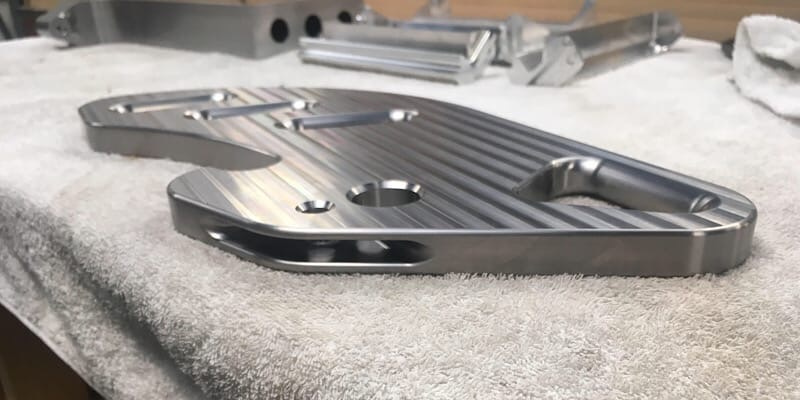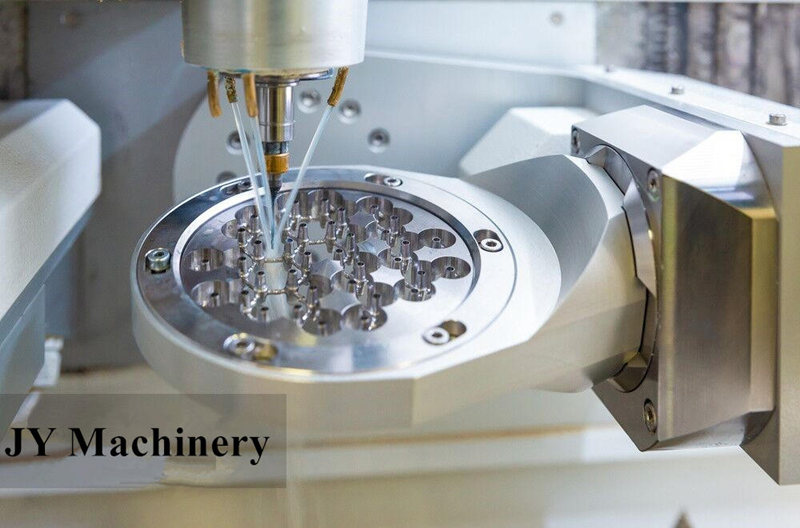
The Reasons Why Titanium Is Hard to Machine

If you want to process custom titanium alloys parts, you must have a thorough understanding of its processing mechanism and phenomena. Many processing parties believe that titanium alloy is an extremely difficult material to process because of insufficient understanding of it. Today JY Machinery will analyze the processing mechanism and phenomenon of titanium alloys for everyone.
1)The first thing to talk about is the physical phenomenon of titanium alloy processing. Although the cutting force during processing of titanium alloy is only slightly higher than that of steel of the same hardness, the physical phenomenon of processing titanium alloy is much more complicated than that of processing steel, which makes the difficulty of titanium alloy processing rise linearly.
2)The thermal conductivity of most titanium alloys is very low, only 1/7 that of steel and 1/16 that of aluminum. Therefore, the heat generated in the process of cutting titanium alloy will not be quickly transferred to the workpiece or taken away by the chips, but will be concentrated in the cutting area, and the temperature generated can be as high as 1,000 ℃ or more, causing the cutting edge of the tool to quickly wear, crack and Generate built-up edge, wear blades quickly appear, and generate more heat in the cutting area, further shortening the life of the tool.
3)The high temperature generated during the cutting process also destroys the surface integrity of the titanium alloy parts, resulting in a decrease in the geometric accuracy of the parts and a work hardening phenomenon that severely reduces its fatigue strength.
4)The elasticity of titanium alloy may be beneficial to the performance of parts, but in the cutting process, the elastic deformation of the workpiece is an important cause of vibration. The cutting pressure causes the "elastic" workpiece to leave the tool and rebound, so that the friction between the tool and the workpiece is greater than the cutting action. The friction process also generates heat, which aggravates the poor thermal conductivity of titanium alloys.
5)This problem becomes even more serious when processing thin-walled or ring-shaped parts that are easily deformed. It is not an easy task to process thin-walled titanium alloy parts to the expected dimensional accuracy. Because when the workpiece material is pushed away by the tool, the local deformation of the thin wall has exceeded the elastic range and plastic deformation occurs, and the material strength and hardness of the cutting point increase significantly. At this time, machining according to the originally determined cutting speed becomes too high, which further leads to sharp tool wear. It can be said that "heat" is the "root disease" that causes the difficulty of titanium alloy processing.
The Useful Tips for titanium alloy parts machining
As one of leader in the CNC industry, JY Machinery has carefully sorted out a process know-how for titanium alloys parts machining, and encourages the entire industry. We stated that on the basis of understanding the processing mechanism of titanium alloys, plus previous experience, the main process know-how for processing titanium alloys is as follows:When the hardness of titanium alloy is greater than HB350, cutting is particularly difficult, and when the hardness is less than HB300, it is prone to sticking and cutting is difficult. Therefore, the problem of titanium alloy part machining can be solved from the blade. The blade groove wear during titanium alloy processing is the local wear of the back and front along the depth of cut, which is often caused by the hardened layer left by the previous processing. The chemical reaction and diffusion of the tool and the workpiece material at a processing temperature of over 800°C are also one of the reasons for the formation of groove wear. Because during the machining process, the titanium molecules of the workpiece accumulate in the front area of the blade and are "welded" to the blade under high pressure and high temperature, forming a built-up edge. When the built-up edge is peeled from the blade, it will take away the carbide coating of the blade. Therefore, titanium alloy processing requires special blade material and geometry.
When you send out 3D CAD documents to us, JY Machinery will provide you with instant price, on-demand delivery time, as well as design for manufacturability comments for your customized CNC machining components on materials and also producing process, to make sure that the component can meet your expectations as well as budget plan demands.
Get in touch with us today for a free quote!
Skype: Chat on Skype